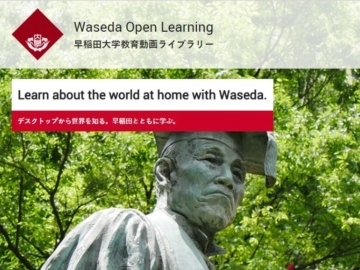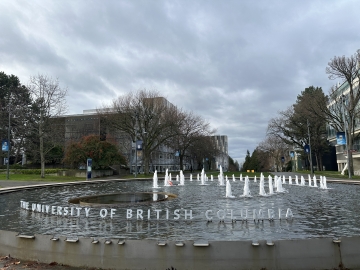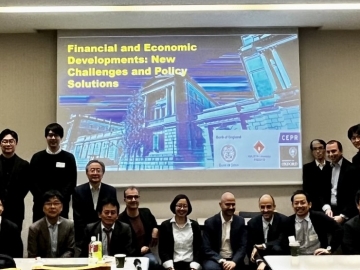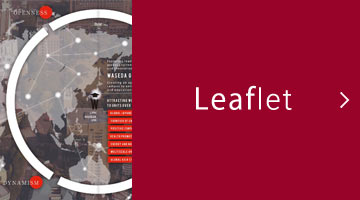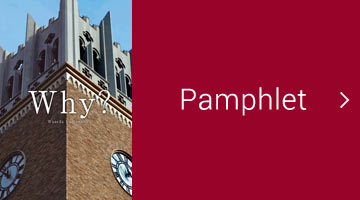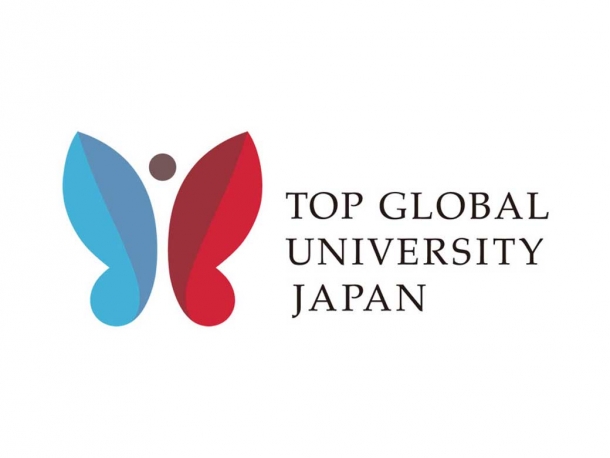January 22, 2022, the online event entitled “The Poetical Achievement of Gozo Yoshimasu: The Poet in World Literature” was held by The Global Japanese Studies Model Unit at Waseda University.
The event began with an introduction by Prof. Masaki Horiuchi (Faculty of Letters, Arts and Sciences, School of Humanities and Social Sciences), the moderator and organizer, who recited the following:
“As is well known, Gozo Yoshimasu has always been active as a poet in the front lines, from his first poetry anthology Syuppatsu (Departure) in 1964 to the present day. Just recently, he published a poetry anthology VOIX from Shichosha and Shi toha Nanika (What Is Poetry?) from Kodansha Gendai Shinsho. Until last year, he was uploading videos on YouTube once a week. He goes to the Ayukawa area of Ishinomaki City, Iwate Prefecture, where he continues to create new works from a room with a view of Mount Kinkazan. Thankfully, today, he has written another new text for us. I feel fortunate to live in the same era as Gozo Yoshimasu, a poet who always leaves his readers behind, who goes beyond the predictions of those around him, and who, more than anyone else, creates unpredictably, perhaps even unpredictable to himself.”
Prof. Horiuchi continued, stating “one of the themes of this symposium is Gozo Yoshimasu in world literature. His poetry anthologies have been translated in many countries around the world, including the U.S., Brazil, and France, while he himself has been invited from all over the world, including Ireland, Scotland, Germany, India, and Syria. His texts include Hangul, Pali, French, and other languages as well as English, disrupting the fixed linguistic order of the Japanese language and creating an unknown world of words for anyone. Gozo Yoshimasu as world literature at least implicates a reception and creation not confined to Japan.”
“At the same time, this movement of decentering in poetry has the meaning of de-Tokyo in Gozo Yoshimasu. The poet’s trajectory of traveling across the Japanese archipelago, from Okinawa and Amami to Aomori and Hokkaido, is evident throughout his collection. In consideration of the world, this is the work of a Japanese poet, who constantly traverses multiple diverse cultural spheres within Japan and relativizes the one-country-centric perspective of Japan. In this respect, his recent poems have an extremely actual meaning, deeply affected by the Great East Japan Earthquake of March 11 and reflecting on the Tohoku region. Poet Ryoichi Wago joins us as a speaker. This would help deeply consider on Yoshimasu’s present.”
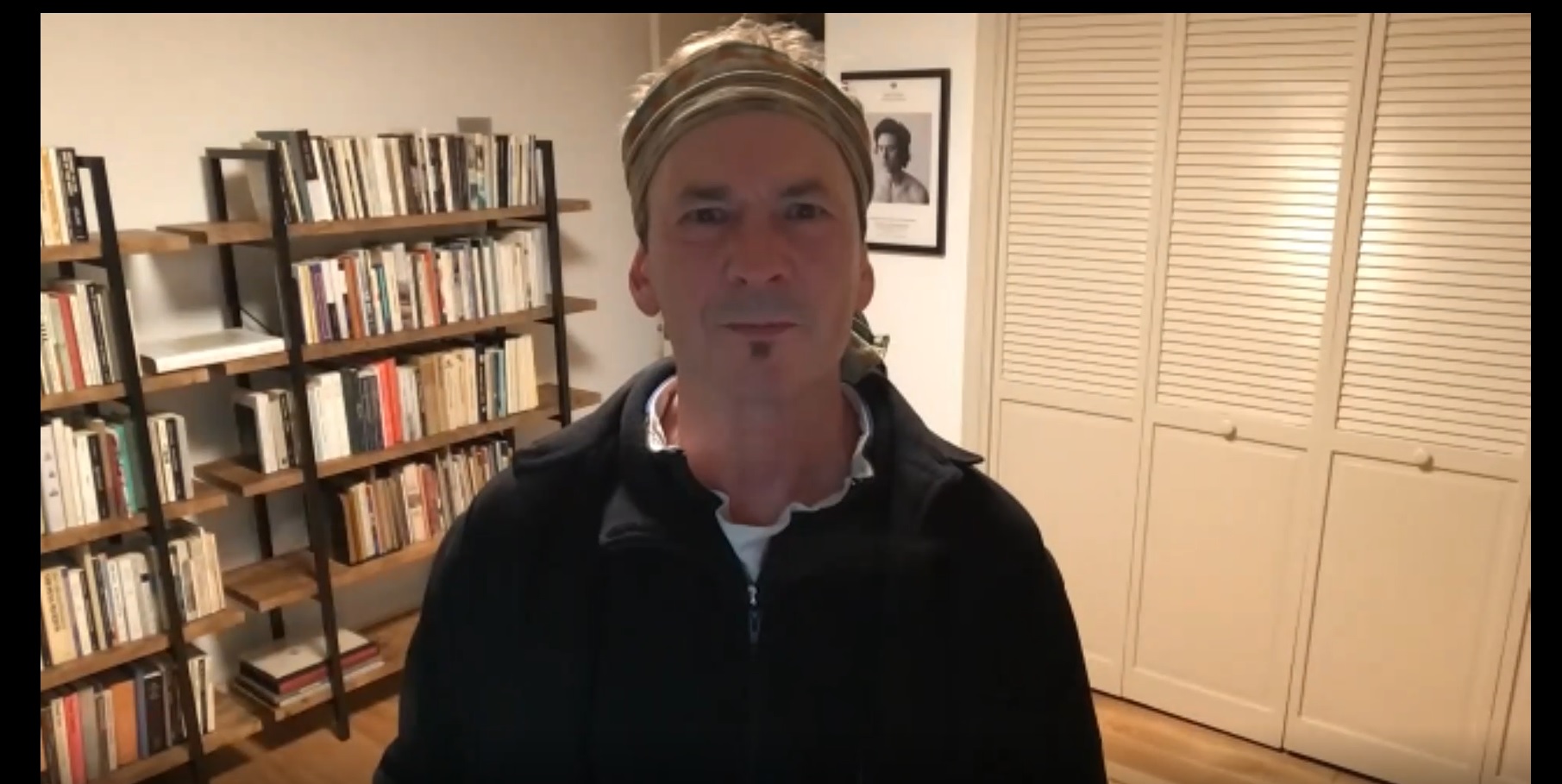
Next was the first part of the event, a lecture by Mr. Forrest Gander. Under the spread of novel coronavirus infection, he participated via Zoom from his home in California. He read out his own text, titled “Letter to Gozo from CA,” while Prof. Horiuchi took turns reading out the prepared translation at each section break. Forrest Gander is an American poet born in 1956, who won the Pulitzer Prize for Poetry in 2009 for his collection of poems: Be With. His poetry books include Science and Steepleflower (1998), Torn Awake (2001), Eye Against Eye (2005), Core Sample from the World (2001), and Eiko & Koma (2001, Japanese translation 2009, Awai Books). His latest collection of poems is Twice Alive (2021), and his fictional works include The Trace (2014). In addition to translating Spanish poetry, he has done a number of joint translations with collaborators in other languages, and is the editor and translator of English translation of Gozo Yoshimasu’s Alice Iris Red Horse: Selected Poems of Gozo Yoshimasu.
His reading of the text was powerful, verging on the energetic. Gander’s memories of his past experiences with Gozo Yoshimasu in various countries were portrayed with poetic expressions. Especially, at the end, he mentioned the essence of Yoshimasu’s performance: by daring to impose restraints and inconveniences on himself, he is able to escape from the control of his ego and self-consciousness, and express beyond limits.
This was followed by a questions and answers session, with Prof. Jordan Yamaji Smith (Josai International University) interpreting from Japanese to English and Kyoko Yoshida of the Institute for Language and Culture Studies at Ritsumeikan University, a supporter of the event, interpreting from English to Japanese. This included how this text was written with the famous Li Po poem “Exile’s Letter” from Cathay, a collection of translated Chinese poems by Ezra Pound, in mind, and what he thought of Gozo Yoshimasu’s poem as a translator. A Zoom participant mentioned that the nature of the text as a “letter” was also common to Gozo Yoshimasu’s poems. Finally, Gozo Yoshimasu also took the stage and spoke passionately about his impressions of the content of Gander’s lecture.
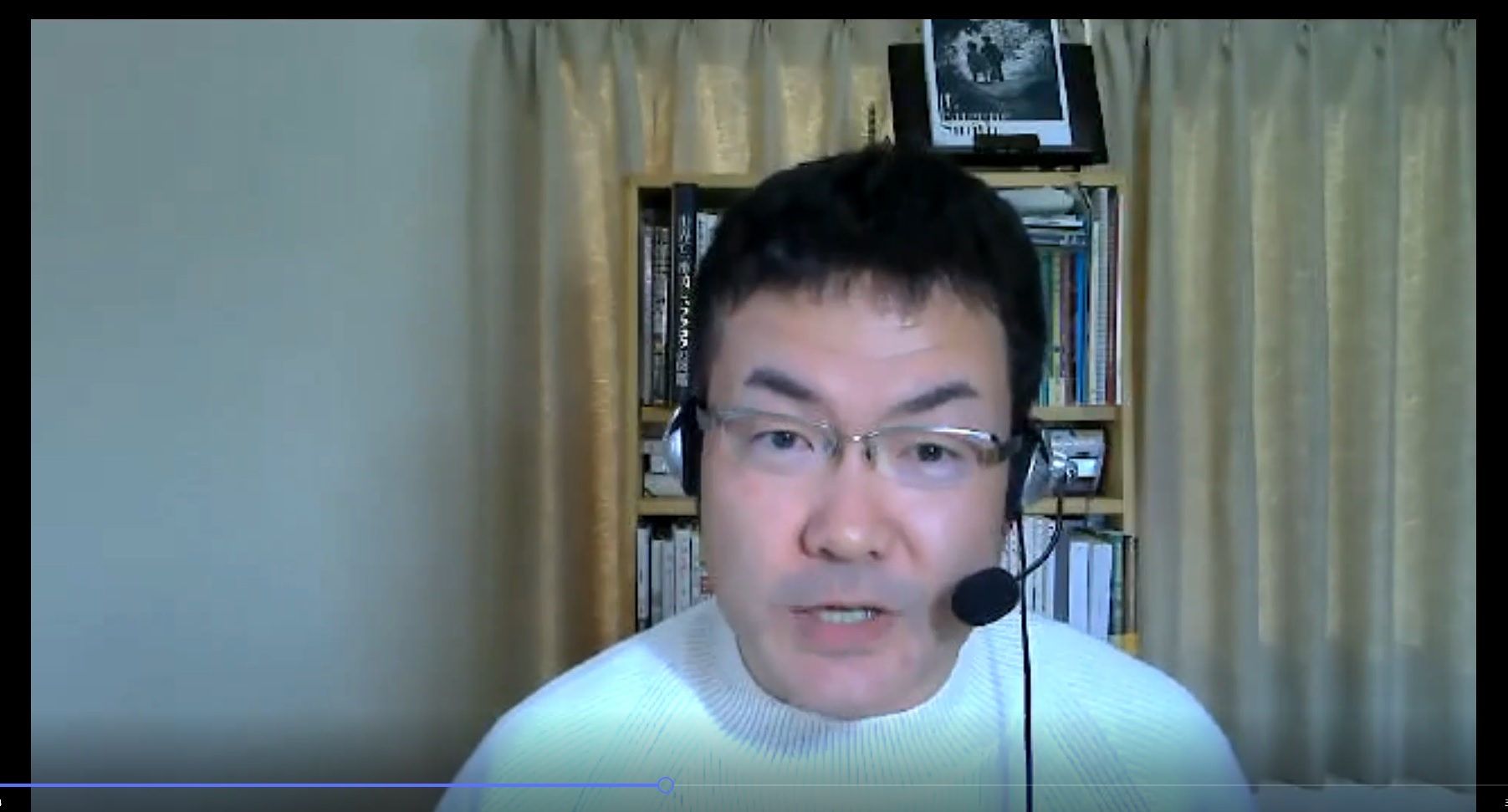 The second part of the symposium began. Prior to the four speakers, Prof. Horiuchi gave a short talk to present a general perspective. A more extended version will be published in the same issue of Gendaishi Techo.
The second part of the symposium began. Prior to the four speakers, Prof. Horiuchi gave a short talk to present a general perspective. A more extended version will be published in the same issue of Gendaishi Techo.
First was a talk by poet Ryoichi Wago. Wago lives in Fukushima and participated via Zoom. He talked about his current series of dialogues with Gozo Yoshimasu in Gendaishi Techo and Kahoku Shimpo, how he felt about Yoshimasu, and what he thought of Gozo Yoshimasu as a senior poet. Referring to Yoshimasu’s words that “poetry is a narrow path,” he said that in Yoshimasu’s poetry, we can find a way of proliferation likened to the “Fibonacci sequence,” and that this is the entrance to the “other world.” He compared it to the tent performances of Juro Kara he used to watch in his youth. After the Great East Japan Earthquake and Covid-19, he felt that the opposite of “everyday life” is “death.” The depth of Yoshimasu’s poetry touches the “black color” or “another layer of the universe,” which are opposite of everyday life. The narrow path also overlaps with the path taken to escape the tsunami of the earthquake. In a lively tone of voice, he talked about how Yoshimasu’s poems have the sense of coming close to a “narrow path” in poetry, which reminds him of Soseki Natsume’s advice to Ryunosuke Akutagawa to walk in a transcendental attitude.
Prof. Jordan Yamaji Smith gave the next presentation. He translated Yoshimasu’s poems into English with Gander. He talked about how the act of translating Yoshimasu’s poems, with Gander’s lead, allowed him a great deal of freedom and creative play, and how difficult his poems, with multiple multilingual layers, are to translate. Inspired by Yoshimasu’s poetry, he gave a unique presentation including a play on words, freely switching back and forth between English and Japanese. He was able to present the influence and effects of Gozo Yoshimasu’s poetry through his own body.
This was followed by a presentation by Prof. Kai Gohara (The University of Tokyo). She began by focusing on the occurrence of the “v” sound in Yosimasu’s latest collection of poems, VOIX, and how it evokes associations in multiple languages. Even when written in Japanese, Yoshimasu’s poems have a leap of depth including the etymology of foreign words. The “Gozo Yoshimasu-like thing” is multiplexed and divided every moment. In our daily lives, it is forgotten, whereas if we were aware of it, our daily lives would not stand still. Taking his recent poetry book Kaibutsu-kun (Dear Monster) and VOIX as examples, she developed a dense thought process with a view to contemporary thought. In the second half, she pointed out the similarity between Freud’s “magic memo” and Yoshimasu’s way of generating texts. With difficulty in giving a general summary of the dense presentation, those who are interested are encouraged to read the March 2022 issue of Gendaishi Techo.
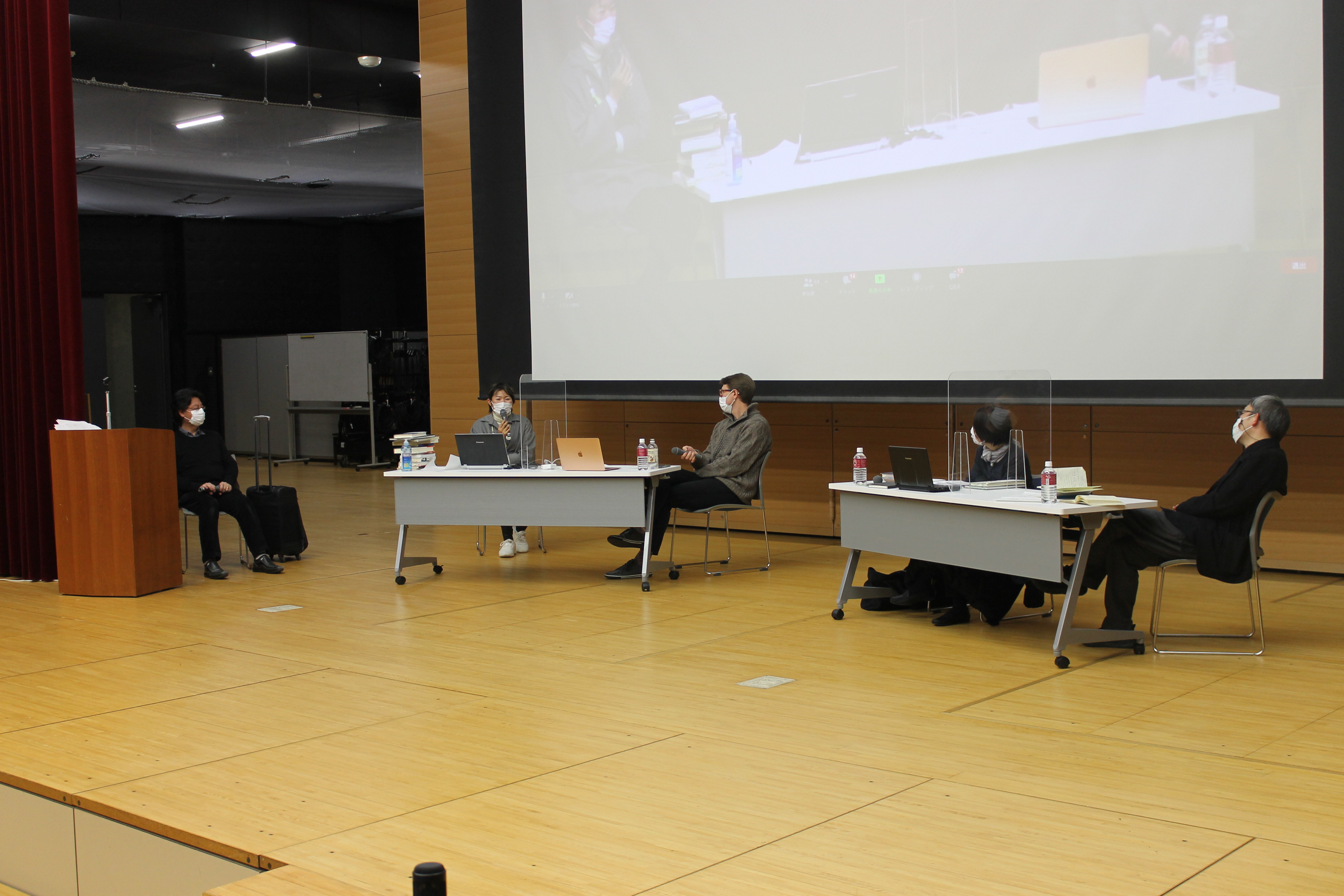 Next was a presentation by Prof. Masatsugu Ono (Faculty of Letters, Arts and Sciences, School of Humanities and Social Sciences). While studying in France, he met Professor Claude Mouchard, living in Orleans, and was touched by his “hospitality,” which led him to live in Mouchard’s house. Mouchard was involved in the translation of Gozo Yoshimasu’s poems into French, and this was the beginning of his relationship with Yoshimasu. He also talked about how he met Yoshimasu and his partner Marylia at Mouchard’s house, which gave him an insight into Gozo Yoshimasu’s unique way of behaving. He also talked about his experience of translating Yoshimasu’s work “Antique observatoire” (“Kodai Tenmondai”) in collaboration with Mouchard.
Next was a presentation by Prof. Masatsugu Ono (Faculty of Letters, Arts and Sciences, School of Humanities and Social Sciences). While studying in France, he met Professor Claude Mouchard, living in Orleans, and was touched by his “hospitality,” which led him to live in Mouchard’s house. Mouchard was involved in the translation of Gozo Yoshimasu’s poems into French, and this was the beginning of his relationship with Yoshimasu. He also talked about how he met Yoshimasu and his partner Marylia at Mouchard’s house, which gave him an insight into Gozo Yoshimasu’s unique way of behaving. He also talked about his experience of translating Yoshimasu’s work “Antique observatoire” (“Kodai Tenmondai”) in collaboration with Mouchard.
Listening to the reading, he could see how the tone changed in the middle of the reading, even when the same words were repeated, and he could feel what was conveyed through Yoshimasu’s body in the performance, which helped him in the translation. He had the impression that Yoshimasu was always “with someone,” as if Yoshimasu were a “molecule,” always grasping and connecting with something, catching the echoing language and even the unconsciousness therein. He thought Yoshimasu was a poet with a “mysterious molecular structure”. He pointed out that this leads to the problem of writing in multiple languages.
With only 30 minutes left in the symposium, the speakers exchanged words with each other after a few words from the Zoom audience. Wago gave a talk that he had prepared but could not fit into the time allotted. He pointed out that the biological phenomenon of “coevolution” was connected to the issue of Gozo Yoshimasu. Coevolution means that a change in one biological factor triggers a change in another related biological factor. In one example, the evolution of behavior and morphology occurs in the relationship between a bee receiving the sign of a flower and a flower receiving the sign of the bee’s gestures.
The poet Gozo Yoshimasu is co-evolving with such neighboring things. There is a “symphony of signs,” or a partnership between the poet and “the sun and the earth,” and the “co-evolving poetic landscape” leads “to a deep sense of awakening in the space/time of the everyday”. Prof. Ono asked why, when translating a poem in French, the meaning of each word is fixed and the translator is not allowed much freedom, whereas, when translating it into English, there is room for the translator’s creativity. Prof. Smith explained how the multilayered nature of Gozo Yoshimasu’s text and the editor Gander’s attitude made it possible. At this point, Kyoko Yoshida, who translated Yoshimasu’s poems in English in collaboration with Gander, also took the stage to give us some additional information about the translation process. Yoshida is currently working on a “residential” program at Ritsumeikan University, which would allow young and mid-career poets from abroad to stay in Kyoto for a month or so, and spoke about the importance of the International Creative Writing Department for poets, based on her own experience at the University of Iowa. Gozo Yoshimasu was enrolled in the International Creative Writing Department at the University of Iowa in 1970, and the moderator pointed out how important that experience was to his poetic career.
In the third part, Gozo Yoshimasu took the stage. He read out a cramped sheet of B4 paper. He also wrote a new poem in the middle of the night for the day. The manuscript of the poem on three sheets of paper was distributed with the above text as a color copy to the audience and a photographic version to Zoom audience for download. The text and the poem cannot be summarized, and recounting the poem may end up undermining the poet’s expression. However, the article will be published in the March 2022 issue of Gendaishi Techo, so please refer to it. As in his usual lectures, Yoshimasu read out his handwritten prose texts, and commented on each sentence on the spot, making for a mixture of reading and impromptu talk. Afterwards, there was a performance of erasing the manuscript (a copy of Derrida’s book) placed on the stage, and white and green inks were spilled and dripped on the manuscript. Yoshimasu then proceeded to read his freshly written poem.
The significance of this symposium from the perspective of “world literature” was that it placed the perspective of translation at the core of Gozo Yoshimasu’s theory. Gozo Yoshimasu’s poems will be read even more in the future in the network of multilingualism. We felt such a hope. The American poet Forrest Gander’s poems have been translated into many languages, while he is invited from many countries. Significantly, he showed his admiration and respect to Gozo Yoshimasu through concrete and intimate interactions with him. It would not be an exaggeration to say that the friendship determined the tone for the day. Ryoichi Wago is a poet who has gained a wide readership after the Great East Japan Earthquake. Significantly, he discussed the characteristics of the poet, touching on Yoshimasu’s involvement in the disaster areas in Tohoku. Wago is also a poet whose works have been translated into many languages around the world, and he has been in contact with Gander and others, so we felt a network of friendship.
Although the presenters had different stances and points of view, interestingly they had a lot of overlap, which was strange (or perhaps natural). The event was co-sponsored by Shichosha, and we had consulted with the editor-in-chief of Gendaishi Techo from the planning stage. As originally planned, the main part of the presentation is to be published in Gendaishi Techo, and it will continue to be referred to by researchers in the future. The event was held in the midst of the ongoing pandemic, but I feel fortunate that we were able to make it a reality.
(Written by Prof. Horiuchi Masaki)

Event Overview
Free and open to the public
- Date and Time: Saturday, January 22, 2022, 13:00 – 18:45 (JST)
Lecture by Mr. Forrest Gander (poet)
Symposium by Mr. Ryoichi Wago (poet) , Prof. Jordan Smith (Josai International University), Prof. Kai Gohara (The University of Tokyo), Prof. Masatsugu Ono (Faculty of Letters, Arts and Sciences, School of Humanities and Social Sciences)
Lecture by Mr. Gozo Yoshimasu (poet) - Moderator: Prof. Masaki Horiuchi (Faculty of Letters, Arts and Sciences, School of Humanities and Social Sciences)
- Language: Japanese and English
- Venue: In-person (at Ono Auditorium) and online (Zoom Webinar)
